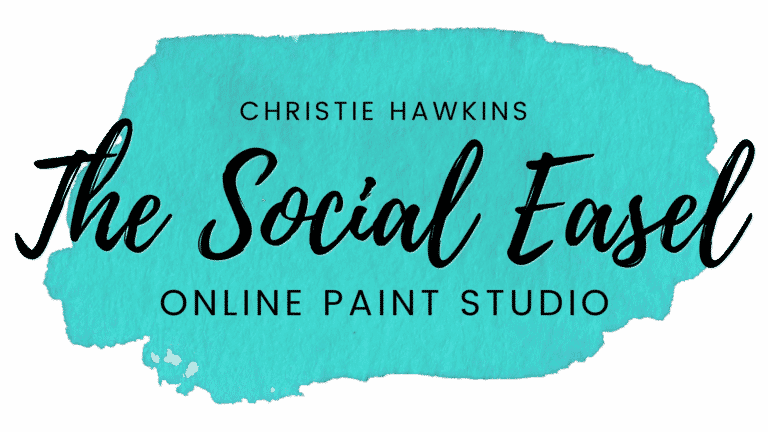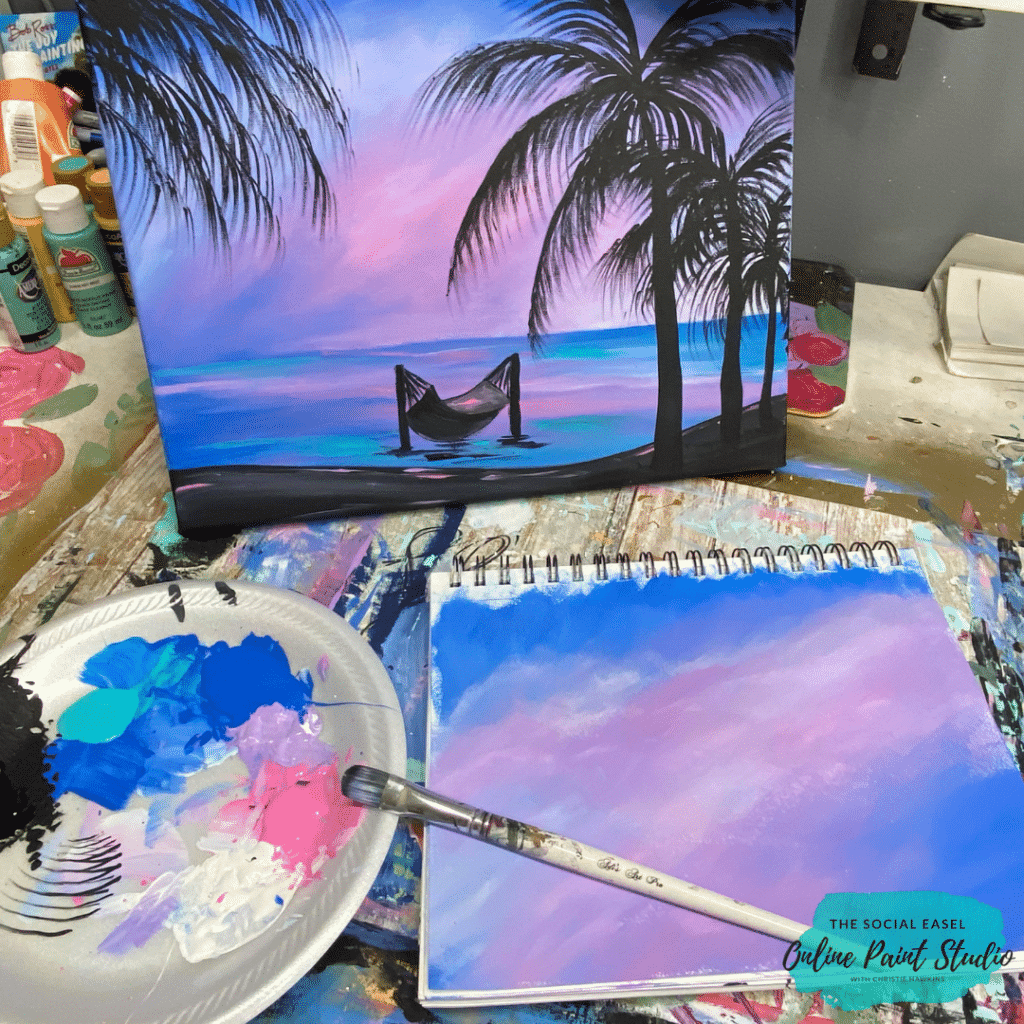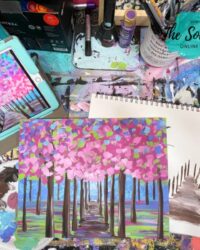Choosing the Right Brush to Paint Palm Trees
Palm trees are one of my favorite things to paint, but they can be intimidating for a lot of people. Getting those skinny little lines looks nearly impossible… Doesn’t it? You may be asking yourself, “What brush do I use to paint palm trees?”
Today, I will show you three different brushes that you can use to paint palm trees. Each one resulting in a little bit different style, all of them beautiful!
* This post may contain affiliate links. If you purchase, I could make a small commission at no charge to you. Please read my Disclaimer and Privacy Policy HERE.

You can paint palm trees with many different brush shapes, but preference comes down to the individual. Everyone is different, and with a bit of practice, you will learn which tool is your favorite.
You will see how I paint a palm tree with a round brush, a fan brush, and the rake brush, but you’ll have to watch the video below to find out which one is my favorite! I think you are going to be so excited to try this out after you see it.
Materials Mentioned
- Fine Liner Paintbrush Set (Small Rounds)
- Fan Brush Set
- Rake Brush Set (Wisp Brush)
- Acrylic Paints
- Mixed Media Pad
There are so many different types of palm trees! Look up all the different species of palm trees. Pull out your mixed media pad and fill a few pages practicing.
First, your palm tree needs a trunk. Use a round brush to paint one as thick or thin as you like. Some palm trees like to bend and curve, even almost touch the sand, and others stand straight and tall.
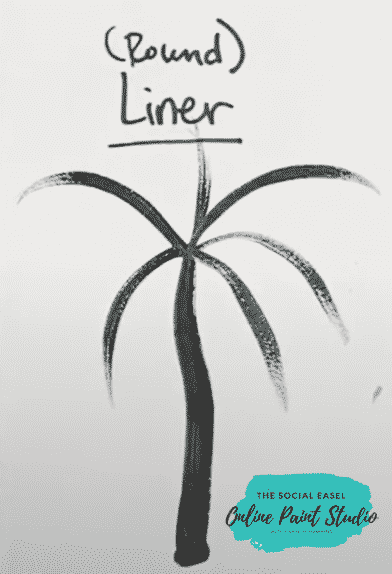
Next, I like to give myself a rough idea of the shape of the palms by painting a simple burst of branches at the top. These don’t have to be perfectly symmetrical. Nature takes shape in many ways.
Use this base shape to practice palm leaves with each brush.
How to Paint Palm Trees with a Fine Liner Brush
With the liner brush (small round), I like to dip the bristles into the water before going into my paint. Thining the paint out a little this way makes it a little easier to work with when creating thin lines.

When using a liner brush, you want to use very light pressure to go along your branch line softly pulling down with short, quick brush strokes,
How to Paint Palm Trees with a Fan Brush
The fan brush can be a little bit tricky. Depending on how much paint you have on your brush, it can have quite a thick band of paint before pulling it out into the separated frond.

If you wipe off your brush some with a paper towel, the bristles will clump together. Then you can dab into paint and get a more piece-y stroke.

Mess around with the fan brush both ways to see what look you like best. I like having the bristles separated, what do you think?
How to Paint Palm Trees with a Rake Brush
Lastly, I want to show you how to use the rake brush to paint palm trees. I was introduced to the rake brush not too long ago and instantly fell in love. I shared all my tips for using it in my latest addition to my brush series HERE.

The rake brush resembles the fan brush with bristles clumped together in sections when painting palm trees.
Just like with the liner and fan brush, begin the brush stroke along the tree branch line, and with a light hand, swiftly pull downward with a slight curve.
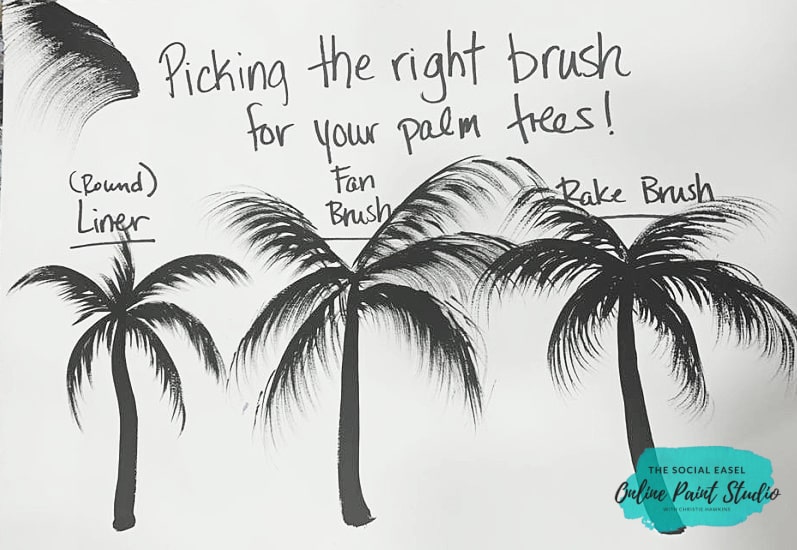
Watch Christie Break Down How to Paint Palm Trees with 3 Different Brushes
I can’t resist painting a beautiful beach scene with palm trees in the summer! Inside my private painting group, Christie’s Inner Tribe, we recently painted two paintings with palm trees! And just look at how different they are from each other…


See how each of them is uniquely beautiful to fit the different styles of each piece?
Combine this simple palm tree lesson with some of my painting tutorials on blending and sunsets, and you’re going to be able to create your own beautiful beach scene!
To create a simple sunset, try out this quick tutorial on the basics of blending acrylic paints for beginners.
If you want a little more detail, check out my blog on painting a cloudy sunset sky.
I have heard from many that they are nervous about painting their palm trees on their background because they don’t want to mess it up. My advice would be to practice a few palms in your mixed media pad while you are waiting for your background to dry.
Get the feel of your brush stroke before taking it to your painting.
I can’t wait to see your practice work! Text “Hey Christie” to 417-217-7044 and show me what you are working on and share it in the Facebook Group!
As an artist, we are always learning new techniques and growing. There is always something new out there.
Stay creative,

For more resources about paintbrushes, I created a whole series breaking down all my favorite ways to use each style of brush, tips for achieving the brush strokes you desire, and share care instructions HERE.



